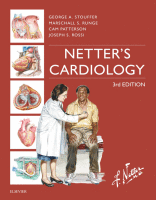Physical Address
304 North Cardinal St.
Dorchester Center, MA 02124

Etiology and Pathogenesis Venous thromboembolism (VTE) is common and has an annual incidence of approximately 0.1% in the general population. VTE is a broad term used to include patients with both deep venous thromboembolism (DVT) and pulmonary embolism (PE). These…

There is a wide spectrum of diseases that can affect the aorta. Aneurysmal disease is the second most frequent disease of the aorta after atherosclerosis. The most common location for aneurysmal disease is the infrarenal aorta, but it can also…

Cerebrovascular accidents (CVAs) are a major cause of disability and death worldwide. There are two broad categories of stroke: hemorrhage and ischemia. Hemorrhage is characterized by bleeding within the closed cranial cavity, whereas ischemia is regarded as too little blood…

Peripheral vascular disease (PVD) encompasses the pathologies of both the arterial and the venous circulations. Advanced disease of either system can be debilitating and disabling. The clinical presentation and therapeutic choices for patients with PVD vary widely, depending on the…

Charles Dotter and Melvin Judkins first introduced catheter-based interventions for atherosclerotic disease in 1964. Major technological advances now make interventions possible for a vast array of conditions, benefiting millions of patients with coronary, cerebral, or peripheral arterial disease. Percutaneous interventions…

Obstructive disease in the renal arteries can decrease blood flow to the kidneys, which can result in activation of the renin-angiotensin system, hypertension, ischemic nephropathy, and other pathological changes. Technological advances, including intraarterial stenting, have generated enthusiasm for revascularization as…

Normal Pericardial Pathology and Physiology The pericardium can be conceptualized as a “balloon” with the heart being a fist pushed into it. The visceral pericardium adheres to the heart itself and is separated from the parietal pericardium by a space,…

The pericardium is a two-layered sac that encircles the heart ( Fig. 56.1 ). The visceral pericardium is a mesothelial monolayer that adheres to the epicardium. It is reflected back on itself at the level of the great vessels, where…

Mitral regurgitation (MR) is one of the most commonly encountered valvular diseases, and incidence rises precipitously with age. Severe symptomatic MR leads to heart failure, arrhythmias, pulmonary hypertension, and left ventricular failure. Mitral valve regurgitation is generally categorized based on…

Pathophysiology Age-related degeneration of the valve leaflet is the most common cause of aortic stenosis (AS). Degeneration of the aortic valve involves lipid accumulation, inflammation, and ultimately, calcification. In patients with a bicuspid or a unicuspid aortic valve, abnormal architecture…